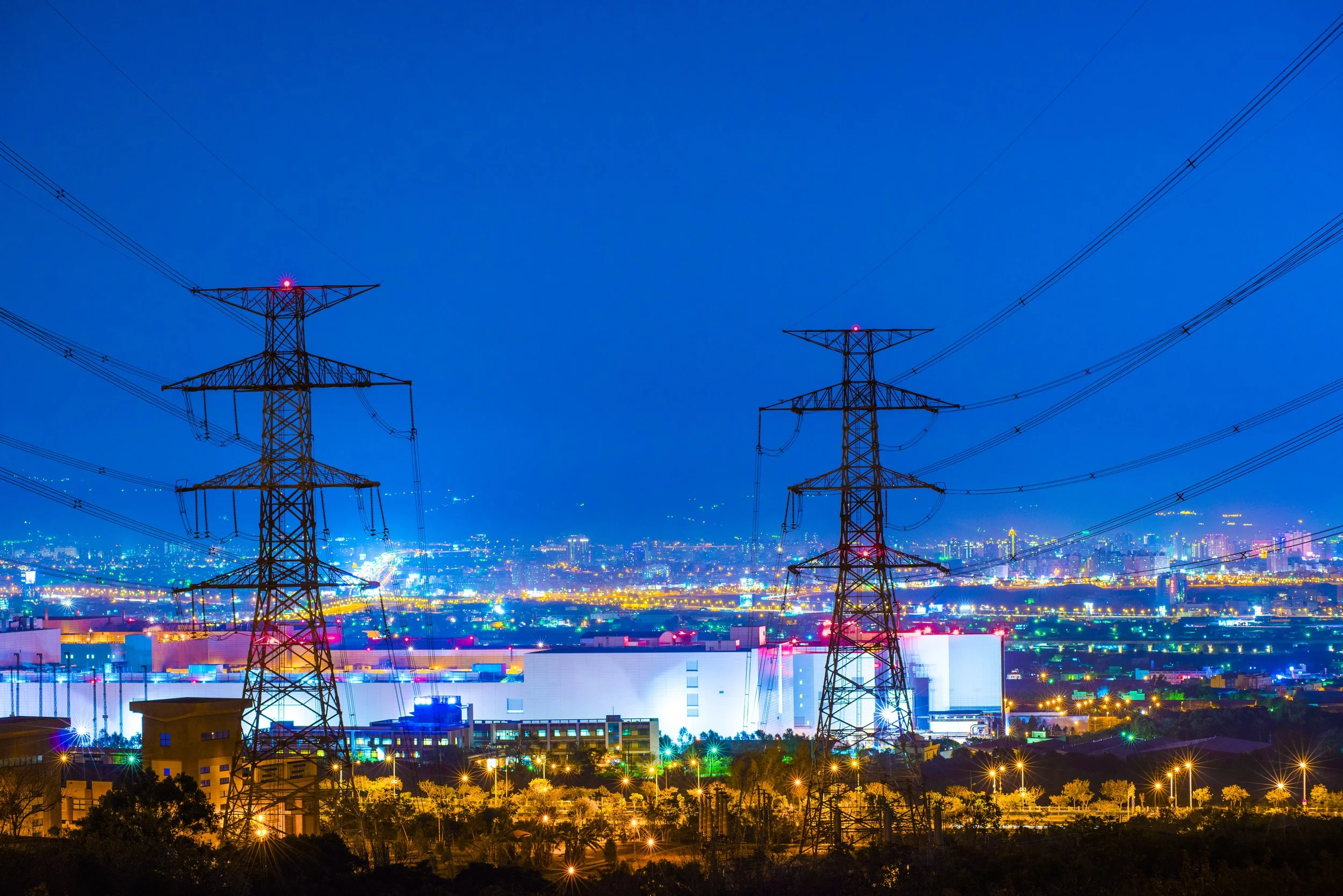Join the Energy Choice Coalition and Our Energy Policy on Wednesday, March 1, for an online discussion on competition in electricity markets and addressing the issues of consumer costs, and supply reliability and resiliency. Panelists include Robert Dillon of the Energy Choice Coalition, Emily Fisher of the Edison Electric Institute, and Nick Loris of C3 Solutions. The discussion will be moderated by Todd Snitchler of the Electric Power Supply Association. The discussion kicks off at noon EST on March 1. Don’t miss it! Register here:
Kiesling Explores How Regulated Utilities have Anticompetitive Effects on Related Markets in Latest Post
Check out the Knowledge Problem for another great post by economist Lynne Kiesling on competitive electricity markets. In her latest commentary, Kiesling looks at the state of retail energy choice and why it has not kept pace with increases in competition in wholesale electricity markets.
“Lots of possible theories exist for such weak competition — high customer acquisition costs, incumbent default service contracts as an entry barrier, regulation-mandated full depreciation of long-lived incumbent assets as a barrier to innovation, customer indifference, to name a few.”
Georgia Assembly Considers Expanding Community Solar and Net Metering Caps
Georgia state Sen. Jason Anavitarte has introduced SB 210, in the Georgia Homegrown Solar Act of 2023 in the Georgia Assembly to expand community solar and net metering in the Peach State.
The legislation adds to Georgia’s Cogeneration and Distributed Generation Act of 2001, the expansion of the solar market by the Georgia Public Service Commission in 2013, and adoption of the Georgia Solar Free-Market Act of 2015.
Solar Power World reports that the legislation would update monthly net metering, create a nonprofit community solar program, and enhance access to consumer usage data.
The bill would allow tax-exempt customers, such as governments and non-profits, to aggregate demand from multiple locations and purchase solar power from generating facilities under 3 MW.
Pennsylvania Customers Suffer Under Monopoly Utilities
Rising energy prices are prompting consumers across Pennsylvania to reconsider their monopoly utility’s default service and look for better options based on the lowest price and customer service. The Pacific Research Institute and the Energy and Policy Institute recently documented several incidences of consumers being subjected to skyrocketing electricity bills due to mistakes (or worse) by monopoly utilities.
PPL Electric Utilities, a monopoly utility serving eastern and central Pennsylvania, recently sent estimated bills to their default service customers because a “technical system issue” that prevented them from accessing usage data. Many consumers experienced sticker shock when they received bills based on “estimated electricity usage” that were hundreds of dollars more than expected.
PPL Electric Utilities’ Price to Compare increased by nearly 18 percent at the beginning of December and has nearly doubled over the past two years. Many customers are paying significantly more than they need to for electricity. PPL hit customers with an 18 percent rate increase on Dec. 1, but some people received bills that were 50 percent higher than expected. The Pennsylvania Office of Consumer Advocate said more than 795,000 customers were affected by the billing issue.
A New Approach to Clean Energy in 2023
President Joe Biden’s ambitious post-pandemic recovery plan includes a historic push to electrify much of America’s economy and meet nearly all the resulting increases in demand for power – from transportation to manufacturing – with renewable energy.
The transition from fossil fuels to cleaner alternatives in response to climate change has become the biggest spending priority of the Biden presidency, including dedicating more than half of last year’s $740 billion Inflation Reduction Act (IRA) to climate and clean energy investments.
The IRA’s $375 billion in clean energy incentives is in addition to billions in climate-related spending approved by Congress in the 2021 infrastructure law, CHIPS and Science Act, and other bills since Biden entered the White House with the pledge to halve the country’s greenhouse gas emissions, from 2005 levels, by the end of the decade.
But while the generous use of the public purse was feasible as long as Democrats maintained majorities in both chambers of Congress, Republicans taking control of the House in January changed the outlook on Capitol Hill significantly.
Should Transmission be Owned by Utilities or a Separate Entity?
In recent years, it has become increasingly challenging to get transmission projects built for a wide range of reasons, including permitting delays, NIMBYism, disincentives to develop projects between different utility territories, and lack of coordination between states.
As a result, there is now more proposed generation capacity and associated projects in the interconnection queues of the independent system operators than ever before, the vast majority of which are wind and solar projects. Part of the reason for the delay in the development of more renewable energy is that there is insufficient transmission capacity in the areas where these projects are being proposed.
Ari Peskoe, the Director of the Electricity Law Initiative at the Harvard Law School Environmental and Energy Law Program, makes two suggestions to resolve these issues. One is to give states more authority over transmission planning and promote competition in the development of transmission infrastructure rather than letting the incumbent utilities build it themselves. The second is establishing a minimum set of benefits for transmission projects to be approved rather than just a single reason, such as improved reliability. Other reasons could include reduced emissions, increased resilience, and increased flexibility.
What's Really Driving Consumer Costs?
A recent New York Times article claims that states with deregulated – or, more accurately, “reorganized” – electricity markets have disproportionately higher prices compared to regulated states. However, research examining changes in consumer electricity prices over time in reorganized and regulated states shows this isn’t true.
Times reporter Ivan Penn overlooks the fact that transmission remains under the jurisdiction of traditionally regulated investor-owned utilities – even in reorganized states.
As a Pacific Research Institute’s paper in 2021 shows, the 14 states with the highest percentage increases in electricity prices from 1996 to 2020 were all states with traditionally regulated electric markets, while four of the five states with the lowest percentage increases were reorganized states.
It is also shortsighted to only look at the consumer price changes over the past three years due to the abnormal circumstances affecting energy markets, including the pandemic, the Russia - Ukraine situation, and the impacts those events have had on supply chains, manufacturing, labor costs and availability, and the like.
Coalition Appeals California's Decision Gutting Net Metering
In a unanimous vote by the state’s Public Utilities Commission (PUC) last month, the State of California abruptly reduced incentive payments for rooftop solar power. The state’s solar incentives program, which led to solar panels on the roofs of 1.5 million homes and businesses, had put California front and center of the energy transition.
Now, three groups are pushing the California PUC to reverse that decision. The Protect Our Communities Foundation, the Environmental Working Group, and the Center for Biological Diversity filed an application for a rehearing to reverse the ruling on January 18, citing a section of the Public Utilities Code instructing the Commission to ensure “that customer-sited renewable distributed generation continues to grow sustainably and include specific alternatives designed for growth among residential customers in disadvantaged communities.”
Economist Lynne Kiesling Launches Substack Version of The Knowledge Problem
Economist Lynne Kiesling has launched a new Substack version of Knowledge Problem, the blog on economics, electricity, technology, regulation, and how they interrelate that she shared with economist Michael Giberson. The original KP blog is archived and available for search.
In her first Substack post, Kiesling takes aim at the New York Times article by Ivan Penn Why Are Energy Prices So High? Some Experts Blame Deregulation. Kiesling singles out three problems with Penn’s analysis: his definition and use of "deregulation," his use of California as an illustration when it is an outlier, and his confusing conflation of retail and wholesale liberalization in a vertically-integrated industry.
Kiesling’s full analysis is worth your time, so check out Knowledge Problem on Substack and subscribe.
California PUC Sides with Big Utilities over Homeowners with Rooftop Solar
The California Public Utilities Commission approved a proposal to reduce the rate homeowners are paid for providing power to the electricity grid from their rooftop solar panels. The move undercuts California’s efforts to reduce carbon emissions to address climate change.
The change to California’s net metering rule comes as Gov. Gavin Newsom eyes a run for the Democratic nomination for president. By throwing more than 1.5 million homeowners, business owners, and other electricity consumers in California with rooftop solar under the bus, the presidential hopeful may be prioritizing the national political clout of Big Utilities.
He’s clearly not prioritizing California’s plan to achieve an 85% reduction in carbon emissions by 2045.
NYISO Aggregation Proposal Disadvantages Rooftop Solar, Other Small DER Generation
The New York ISO’s recently proposed limitation on the use of distributed energy resources (DERs) to compete on its wholesale power markets is raising the ire of retail suppliers and clean efficiency advocates who argue the plan’s “minimum capability requirement” for DERs violates the Federal Energy Regulatory Commission’s Order 2222.
The proposed limitation — which was not mentioned in NYISO’s 2019 DER and Aggregation participation model accepted by FERC in January 2020, or in its Order 2222 compliance filing — would exclude all DERs that generate less than 10 kW of power from participating in DER aggregations, and from competing in the independent system operator’s (ISO) wholesale markets. NYISO argues that the requirement is needed to reduce the amount of DER reliability inspections that it must conduct, given the ISO’s limited manpower.
But NYISO’s proposal undercuts the central purpose of FERC’s Order 2222 — i.e., to allow small-scale DERs to participate through aggregation with large energy generation facilities in wholesale markets.
REAL Commentary: Competition, Choice Would Benefit Virginia Customers
Christopher Ercoli, president of the Retail Energy Advancement League (REAL) wrote about the benefits of energy choice for Virginia consumers in the Virginia Pilot last week.
Last month, Gov. Glenn Youngkin released his energy plan, which calls for more choice and competition in how Virginians get their energy. A critical part is opening access to retail energy providers, which would provide relief to consumers looking for more affordable, cleaner and reliable electricity. This would be an important step toward creating long-overdue competition in the commonwealth’s energy market and breaking the local utilities’ long-held monopolies.
Currently, residents and businesses don’t have much choice in who supplies their electricity. The state allows only two utilities — Dominion Energy and Appalachian Power — to deliver electricity to more than 90% of Virginians. This outdated model made sense a century ago when the electricity industry was new and the government wanted to ensure its viability. Today, given the innovative technologies and services now available from other companies as well as rapidly changing consumer demands, the current system is not only outdated, it’s unsuited to Virginia’s current and future energy needs.
California’s New Net Metering Plan Falls Short (Again)
The biggest solar market in the country is once again attacking solar customers by trying to reduce payments to homes and businesses that supply clean electricity from rooftop solar to the power grid.
The California Public Utilities Commission’s (CPUC) latest proposal tries to smooth the uproar over the state’s previous attempts to gut solar incentives, but continues to fall short of what’s needed to support a robust solar industry.
The plan calls for a 75% reduction in the credit that new customers would get for exporting excess power to the grid, according to the California Solar & Storage Association (CSSA).
The proposal is sure to spark debate between rooftop solar installers, monopoly utilities, and labor unions as California seeks to transition to 100% clean energy by 2045.
CEN Poll Finds Strong Support for Clean Energy and Competition in Electricity Markets
Increased competition in electricity markets is one reform that’s overdue. Allowing consumers to choose their energy supplier, including self-generation with rooftop solar and storage, would help insulate them from the current energy crisis impacting their monthly utility bills.
The CEN survey found that 87% of respondents support increased competition in the electricity markets, with 59% strongly in favor of more competition. A similar number (84%) agreed with the statement that “we should accelerate the growth of clean energy so that our state can be a national leader in the competition for economic development and good-paying jobs.”
Two-thirds of voters who responded to the CEN poll agreed that America can create a new electricity system that benefits the environment, accelerates the availability of new technology, and creates more choices by opening up markets to competition, giving consumers more choices instead of just their monopoly utility. Only 24% said they prefer the current monopoly system.
Proposed Electric Microutility Takes on Big Monopoly Utilities with Consumer-Owned Rooftop Solar and Storage
John Fitzgerald Weaver writes in PV Magazine that Sunnova is pushing back against a motion by major utility companies to dismiss its groundbreaking community microgrid proposal in California.
In September, Sunnova submitted a proposal to the California Public Utilities Commission (CPUC), requesting that its newly formed subsidiary, Sunnova Community Microgrids California (SCMC), fully own and operate microgrids of 500 to 2,000 new homes in the California market.
All three of California’s large, for-profit utilities oppose the proposal. The Public Advocate’s Office of California has suggested the proposal be dismissed, as the group would like to complete its own microgrid standards development.
The proposal is partially based upon the definition of an “electric microutility,” as per Section 2780 of California’s Public Utility Code, which defines a microutiliy as: Any electrical corporation that is regulated by the commission and organized for the purpose of providing sole-source renewable and stand-by generation, distribution, and sale of electricity exclusively to a customer base of fewer than 2,000 customers.”
In California, Energy Freedom Starts with Freedom from Monopoly Utilities
To microgrid or not to microgrid – that is the question coming out of California with Sunnova Energy’s proposal to turn new neighborhoods into self-contained “microutilities” with solar generation on every roof and battery storage in every garage.
The company’s proposal to the California Public Utilities Commission (CPUC) would build new communities of up to 2,000 homes with rooftop solar and battery storage that would be part of a local microgrid.
Sunnova plans to partner with real estate development companies to create microgrids in new-build neighborhoods in California that would reduce the risk of power outages by over 80 percent.
EIA: West and Northeast have the largest share of small-scale solar
New data from the U.S. Energy Information Administration (EIA) shows that small-scale solar usage is increasing among homeowners and commercial buildings and that the lion’s share of that usage is happening in the West.
According to a recent survey, as of 2020, 3.7% of single-family homes are generating electricity from rooftop solar. In 2018 that number stood at 1.6%.
The Western region of the United States has hopped on the solar bandwagon at a higher rate than other regions, though the Northeast is not far behind. The Western region, defined by the 2202 census, includes: Montana, Wyoming, Colorado, New Mexico, Idaho, Utah, Arizona, Nevada, Washington, Oregon, California, Alaska, and Hawaii, and is home to nearly 79 million residents.
In the West, 8.9% of single-family homes use small-scale solar generation. Commercially, 3.8% of buildings have also installed solar generation.
Sunnova urges California PUC to dismiss PG&E concerns on microgrid proposal
Utility Drive reports that Sunnova Energy International is pushing back against Southern California Edison and other utilities that want the California Public Utilities Commission to dismiss the company’s proposal to build and own microgrids in new residential communities.
Sunnova argues that its application meets the CPUC’s requirements for a hearing on the proposal to create micro-utility microgrids in new master-planned residential communities.
Under Sunnova’s proposal for new communities of up to 2,000 homes, each house would have rooftop solar and battery storage and would be part of a community microgrid that would include a community-scale photovoltaic system, energy storage and emergency generation.
New Berkeley Lab Report Looks Impact of Residential Solar + Storage in Blackouts
New research from Lawrence Berkeley National Laboratory finds that single-family homes with behind-the-meter solar-plus-energy storage systems (PVESS) could likely maintain critical loads in weather events that caused outages in traditional utility systems.
The study, Evaluating the Capabilities of Behind-the-Meter Solar-plus-Storage for Providing Backup Power during Long-Duration Power Interruptions, found that in 7 of the 10 events, the majority of homes would have been able to maintain critical loads, using a PVESS with 30kWh of storage. The analysis is the first in what will be a series of studies by Berkeley Lab, in collaboration with the National Renewable Energy Laboratory, on the use of PVESS for backup power. This initial study is intended to provide a baseline set of performance estimates and to illustrate key performance drivers.
Utility front groups spending on disinformation advertising – Energy And Policy Institute
The nonprofit Energy and Policy Institute has launched a new tracking tool exposing up to $2.4 million in spending on advertising by 14 utility front groups over the past four years on social media advertisements, many of which include targeted messaging to mislead customers on critical climate and energy concerns, including the impact of power plant retirements, the reasons behind high utility bills, and the viability of “renewable natural gas” and hydrogen.
Using data from the Meta Ad Library and existing code developed by Brown University, the Energy and Policy Institute’s tracking tool shows the specific regions that the gas and electric utility groups are targeting with the advertisements.
























